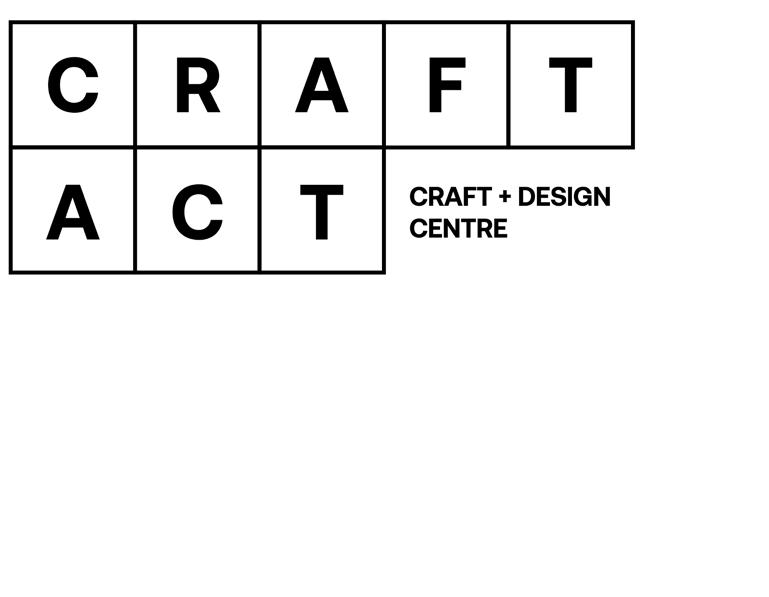TYLER JACKSON: THE PAST IS THE PRESENT, IS THE FUTURE
I think of the Bauhaus and immediately an irksome, self-conscious feeling of nostalgia creeps in. The picture I conjure is a jubilant factory line of avant-garde workers and I hear the muffled orchestra of women talking and weaving in unison. The smell of sawdust from the carpentry workshop warms my nose and then my face scrunches tightly in dismay at the thought of having to take instructions in colour from Josef Albers. I wouldn’t have the patience for his sense of discipline and repetitious line work. Maybe Wassily Kandinsky would be more my style? He wrote a lot about colour, psychology and the spirit. These dynamic and influential creators work in harmony, feverishly and with purpose. They are nourished by the pure belief that the hierarchy between painting and sculpture and the traditional craft-based disciplines can be reorganised. Without a doubt I have just trivialised fourteen years of political, economic and cultural history. Cynically, I wonder if their legacy still holds value if these arbitrary thoughts are all that I have.
It is as though the firm hand of time has taken hold and left me, the outsider, with an impenetrable mythology. An anachronistic tale of selected individuals whose influence is now articulated through the repeated image of a building1 (fig.1). A symbol, which has become part of Modernism’s over simplified account of the “Bauhaus” that was in fact more than one building — firstly located in Weimar [1919-1925], then Dessau [1925-1932] and later situated in Berlin for a short time [1932-1933] — and a broad network of male and female creative innovators. Founded by Walter Gropius in 1919, the Bauhaus was contextualised for its publics through a manifesto that featured an illustrative woodcut by Lyonel Feninger (fig.2). His image Cathedral (Kathedrale) for Program of the State Bauhaus in Weimar (Programm des Staatlichen Bauhauses in Weimar) depicts a gothic church with three steeples adorned by glistening stars. This
Aurora, 2022
Holographic LED fan, 100 x 100 x 10cm
1 Lucia Moholy documented many of the people and architecture of the Bauhaus buildings, specifically the iconic image of the Bauhaus in Dessau. Many of Moholy’s photographs were reproduced by Walter Gropius without her acknowledgement and she later sought legal action.
Tyler Jackson
Photo by Brenton McGeachie
proclamation, which served as part advertising and part propaganda, explained to artists and craft professionals that the building stood to house a ‘new guild of craftsmen, without the class distinctions which raise an arrogant barrier between craftsman and artist’2. It was a new faith, a doctrine, which sought to create a radical unification of art and design. Dr Annemarie Jaeggi, contributor of Bauhaus: A Conceptual Model further clarifies that Gropius’ declaration of intent for the Bauhaus was not a blueprint for a ‘concretely intended building project, but instead a metaphor for the Gesamtkunstwerk, for the total work of art of architecture and painting and sculpture, and for the absorption of the individual by the society, the nation, by humanity’3. Reflecting upon this principle, Bauhaus photographer Lucia Moholy would acknowledge in 1971 that even to her ‘initiated’ peers such as former partner László Moholy-Nagy, Herbert Bayer, Oskar Schlemmer and Anni Albers the notion of what the Bauhaus stood for was at times elusive and varied in practice.
From the start, the very concept “Bauhaus” has been open to interpretation. Even to the initiated, it could be an idea, a program, a method, an institute, and/or a building. How then, should the outsider be expected to differentiate the various meanings? Even back then it seems to have been tempting to replace an idea or program, whose meaning was not clear, with a realised building, the B a u h a u s - as it read in large letters, visible from a distance - and to allow oneself to be lulled by the belief that the “building of the future” has already been erected4.
Lucia Moholy
The Bauhaus was a symbolic beacon for the possibilities for the future; a laboratory for art, architecture and industry to unite and shape a societal change — one that enabled the individual to synthesise their relationship with the environment in modernity.
Aotearoa/ New Zealand based artist Tyler Jackson’s exhibition AURORA (2022) draws on Gropius’ concept and applies this formal and material strategy to our experience in the contemporary. The works presented here as part of the DESIGN Canberra Festival are not concerned with reproducing the aesthetic nostalgia of the Bauhaus, rather, they consider how the metaphor of the Gesamtkunstwerk could be translated to our time. Launch Towards the Second Sun (2022), Black Marble 2012 (2022) and Aurora (2022) are individual and collectively harmonised works of art that adapt the instructional foundations outlined in the Bauhaus curriculum (fig.3). Jackson privileges colour and metal — two of the seven original courses of instruction in crafts — however this formerly exclusive list of materials now merge with LED holographic fans, motion sensors and computer programming to create the Gesamtkunstwerk (total work of art). In Gropius and Bayer’s publication Bauhaus 1919-28 for the Museum of Modern Art, New York, they outline how this teaching program consisted of an idea that significant artistic ‘achievement depends on the coordination of all creative facilities’5 available to the professional. Absorbed by this same commitment Jackson provokes the spectator to break from our traditional expectations of ‘art’ and ‘craft’ by demonstrating their contemporaneous possibilities.
4 Lucia Moholy, “Questions of Interpretation*,” October 172 (Spring 2020): 125-134. https://doi.org/10.1162/ocot_a_00397
2 Herbert Bayer, Walter Gropius and Ise Gropius, Bauhaus 1919-1928 (New York: Museum of Modern Art and Arno Press, 1938), 16.
3 Annemarie Jaeggi, Bauhaus: A Conceptual Model (Germany: Hatje Cantz Verlag 2009), 13-15.
5 Herbert Bayer et al., Bauhaus 1919-1928, 20-29.
Entering the gallery space the works appear as obscure windows or doorways. Bizarre gateways that are larger than domestic scale, stripped of ornamentation and sentimentality. Through an architecturally designed interplay with the human body — my body — it is as though the objects cannot exist without my presence. I have activated a kind of futuristic stage set and this function only becomes apparent when I traverse the room. It is the affect of what Moholy-Nagy called ‘the balance of tense contrary forces’6 which induces the feeling of being in the world rather than privileging an aesthetic representation of it. As the light in Launch Towards the Second Sun shifts from one colour to another it simulates the optical effects in nature. I am not quite certain if I am inside looking outside or outside looking in. My mind races through an index of comparative associations such as László Moholy-Nagy, Light Prop for an Electric Stage (Light-Space Modulator) (1930) (fig.4), Anni Albers, wall hanging in black, white and orange (WE 791) (1926/1964) (fig.5) and Oskar Schlemmer, Spiel mit Köpfen (Play on Heads) (1923) (fig.6). Something to ground my optical experience. They too interweave light and shadow through a material veiling of shapes and of colour to reveal the formal qualities of space. I let go of cynicism in that moment and believe (if only briefly) that the past is always with us, it informs our present and we have the capacity to influence our future.
Anja Loughhead
November 2022
Anja Loughhead is an independent writer and curator.
Bonn Principles and Curriculum | Bauhaus (getty.edu)
Figure 4: Laszlo Moholy-Nagy, Light Prop for an Electric Stage (Light-Space Modulator) 1930. Aluminum, steel, nickel-plated brass, other metals, plastic, wood and electric motor. Harvard Art Museum BR56.5 © President and Fellows of Harvard College
From the Harvard Art Museums’ collections Light Prop for an Electric Stage (Light-Space Modulator)
Figure 5: Anni Albers, wall hanging in black, white and orange (WE 791), 1926/1964. Bauhaus-Archiv Berlin
Anni Albers, Wall hanging, 1926/1964 - Textiles - Bauhaus-Archiv | Museum für Gestaltung, Berlin
Figure 6: Oskar Schlemmer, Spiel mit Köpfen (Play on Heads) 1923. Portfolio of six lithographs. Museum of Modern Art 374.1949.7 Play on Heads (Spiel mit Köpfen) | MoMA
6 Herbert Bayer et al., Bauhaus 1919-1928, 122-124.
Figure 1: Lucia Moholy Bauhaus Building, Dessau 1925-26. Silver gelatin photograph. Tate P79916 © Estate of Lucia Moholy / DACS 2022 ‘Bauhaus Building, Dessau’, Lucia Moholy, 1925–6 | Tate
Figure 2: Lyonel Feininger, Cathedral (Kathedrale) for Program of the State Bauhaus in Weimar (Programm des Staatlichen Bauhauses in Weimar) 1919. Woodcut. Museum of Modern Art 156.1945 © 2022 Artists Rights Society (ARS), New York / VG Bild-Kunst, Bonn Lyonel Feininger. Cathedral (Kathedrale) for Program of the State Bauhaus in Weimar (Programm des Staatlichen Bauhauses in Weimar). 1919 | MoMA
Figure 3: Walter Gropius, Diagram of the Bauhaus curriculum 1922. Lithograph. Getty Research Institute, 850513 © 2019 Artists Rights Society (ARS), New York / VG Bild-Kunst,
Following spread left:
Tyler Jackson
Launch Towards the Second Sun, 2022, Steel, aluminium, acrylic, paint, LED lights, raspberry pi, sensors, 265 x 235 x 30 cm
Following spread right:
Tyler Jackson
Launch Towards the Second Sun, 2022, reflected in Black Marble 2012, 2022 (detail)
Photo by Brenton McGeachie
Photo by Brenton McGeachie
ARTIST STATEMENT
AURORA is a study of light, and brings together a collection of sculptures influenced by the Bauhaus design movement. The title of the main work in the exhibition, Launch Towards the Second Sun (2022), is a quote from Chris Mason’s book The Next 500 Years: Engineering Life to Reach New Worlds (2021), and indicates our reliance on our sun and the energy it provides. As a species, we are dependent on light to exist and thrive. Launch Towards the Second Sun acts as the main light source for the show, and also reflects my ongoing interest in creating programmable autonomous machines. The work responds to both its natural environment and its encounters with humans, in effect communicating through light and shifting with changes in the Canberra environment. Weather, air pressure, wind, humidity, and temperature impact texture, frequency and duration of light through the use of a custom designed algorithm. The work also responds to movement through an infrared sensor. There is also an audio component to this exhibition, which was developed in collaborated with sonic artist Jackie Jenkins, and inspired by the journey that light must take before reaching us.
Light–Space Modulator (1932), a work by Hungarian Bauhaus artist Lazhlo Maholy-Nagy, is a key influence on my practice. This piece of “lighting equipment” was a device used for demonstrating both plays of light and manifestations of movement. My work AURORA (2022) — also the exhibition title — builds on this idea by employing a mass-produced, holographic fan. This medium embodies the aims of Maholy-Nagy’s piece, synthesising light and movement to create a kinetic image. The fan presents an animation of an aurora, although in a holographically constructed world. The work questions our relationship with the natural environment through a technological lens and how our perception of the natural world might be reimagined in a future of artificial, machine-made environments.
The title of the third and final work in the exhibition, Black Marble 2012 (2022), derives from NASA’s first composite image of Earth at night taken in 2012 and named “Black Marble”. These images used filtering techniques to observe the impact of artificial light pollution caused by city lights, gas flares, auroras, wildfires, and reflected moonlight, to highlight all the human and natural matter that can be detected from space. My Black Marble 2012 work is an intervention between the gallery columns, and uses mirror acrylic, which, like a camera apparatus, controls and captures light. The reflective nature of the material reflects light from Launch Towards the Second Sun, creating a secondary light source. This interaction between the two works symbolises the relationship between the earth and the sun.
Referencing Bauhaus ideas of design, re-contextualised within the setting of the DESIGN Canberra Festival, AURORA questions how we think of design within the context of the new technologies, and more broadly how we perceive light and space in our technological age.
Tyler Jackson
November 2022
Tyler Jackson is a Wellington/Te Whanganui-a-Tara based early career artist and curator.

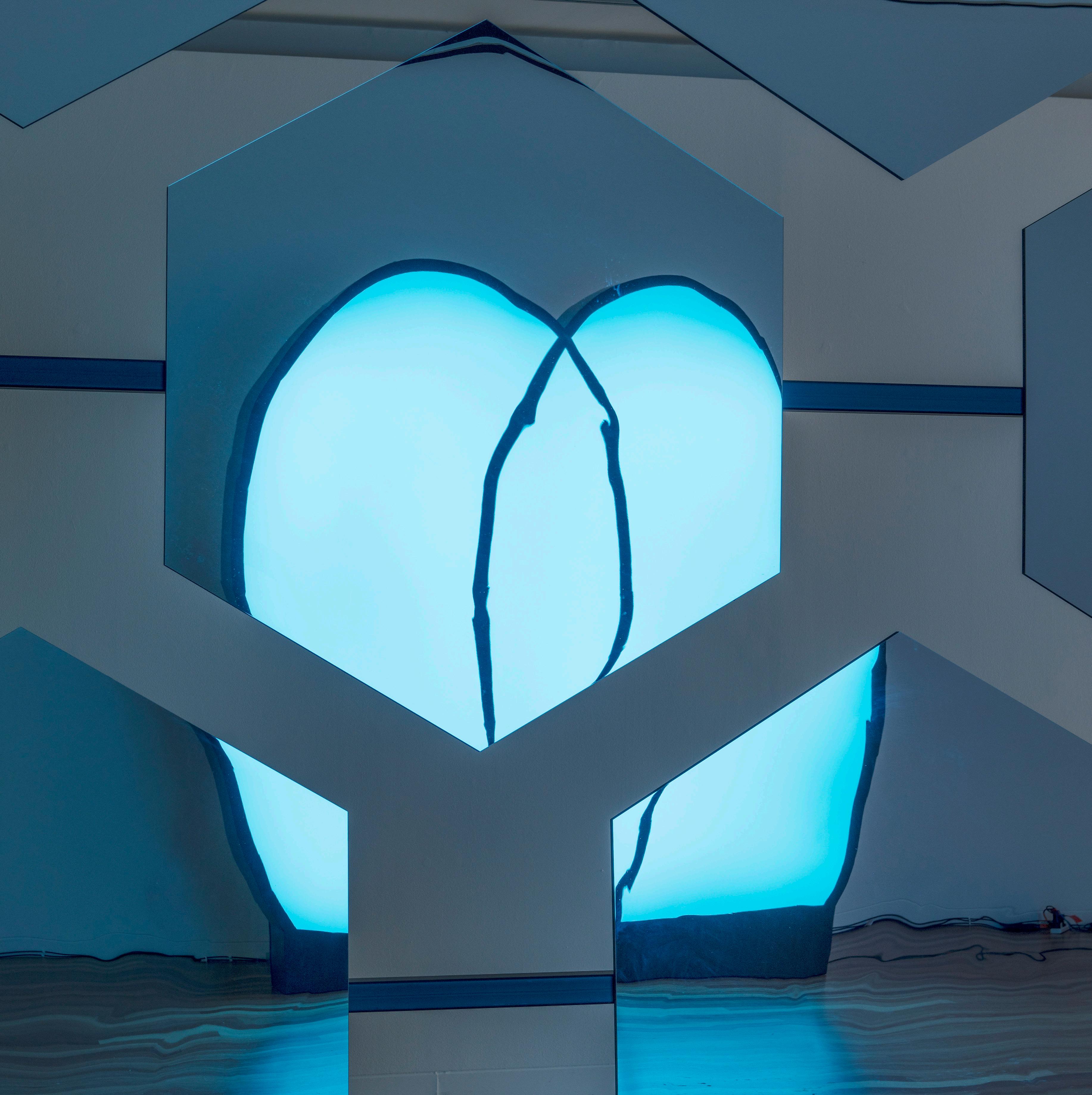
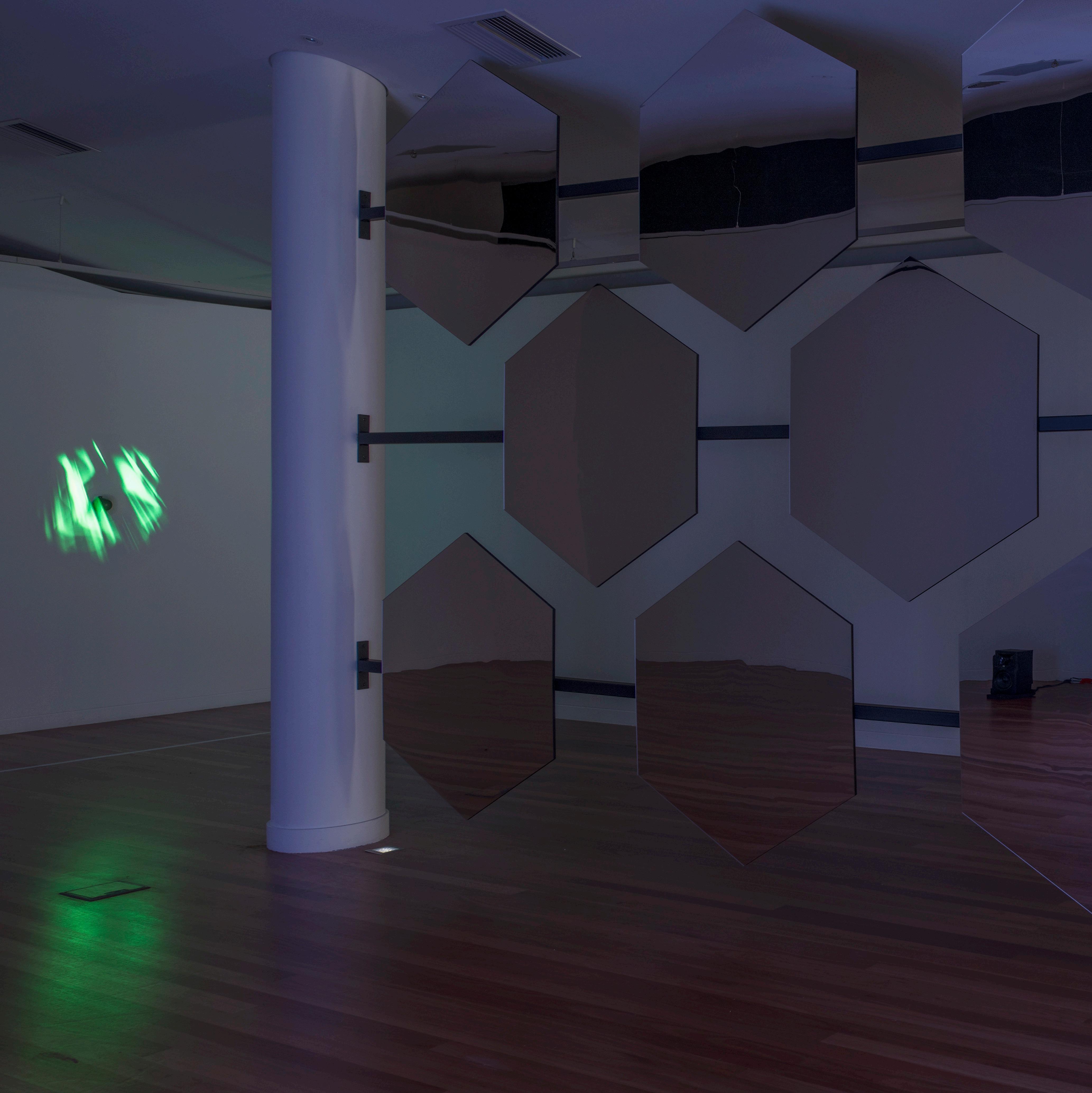 Tyler Jackson
AURORA exhibition installation, Canberra Contemporary Art Space, 2022
Photo by Brenton McGeachie
Tyler Jackson
AURORA exhibition installation, Canberra Contemporary Art Space, 2022
Photo by Brenton McGeachie
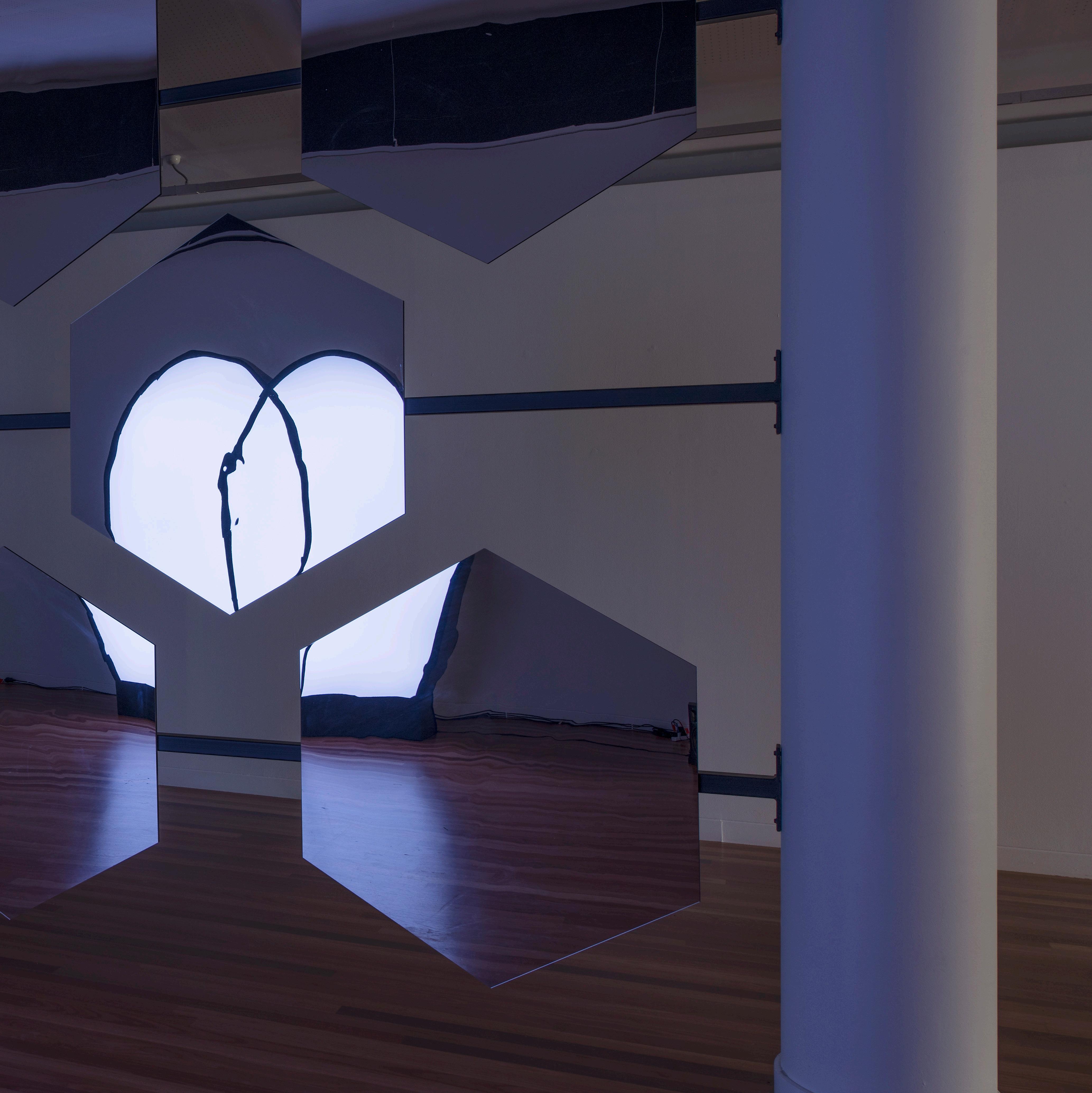
Launch Towards the Second Sun, 2022, (install photograph)
Steel, aluminium, acrylic, paint, LED lights, raspberry pi, sensors, 265 x 235 x 30 cm
 Tyler Jackson
Photo by Brenton McGeachie
Tyler Jackson
Photo by Brenton McGeachie

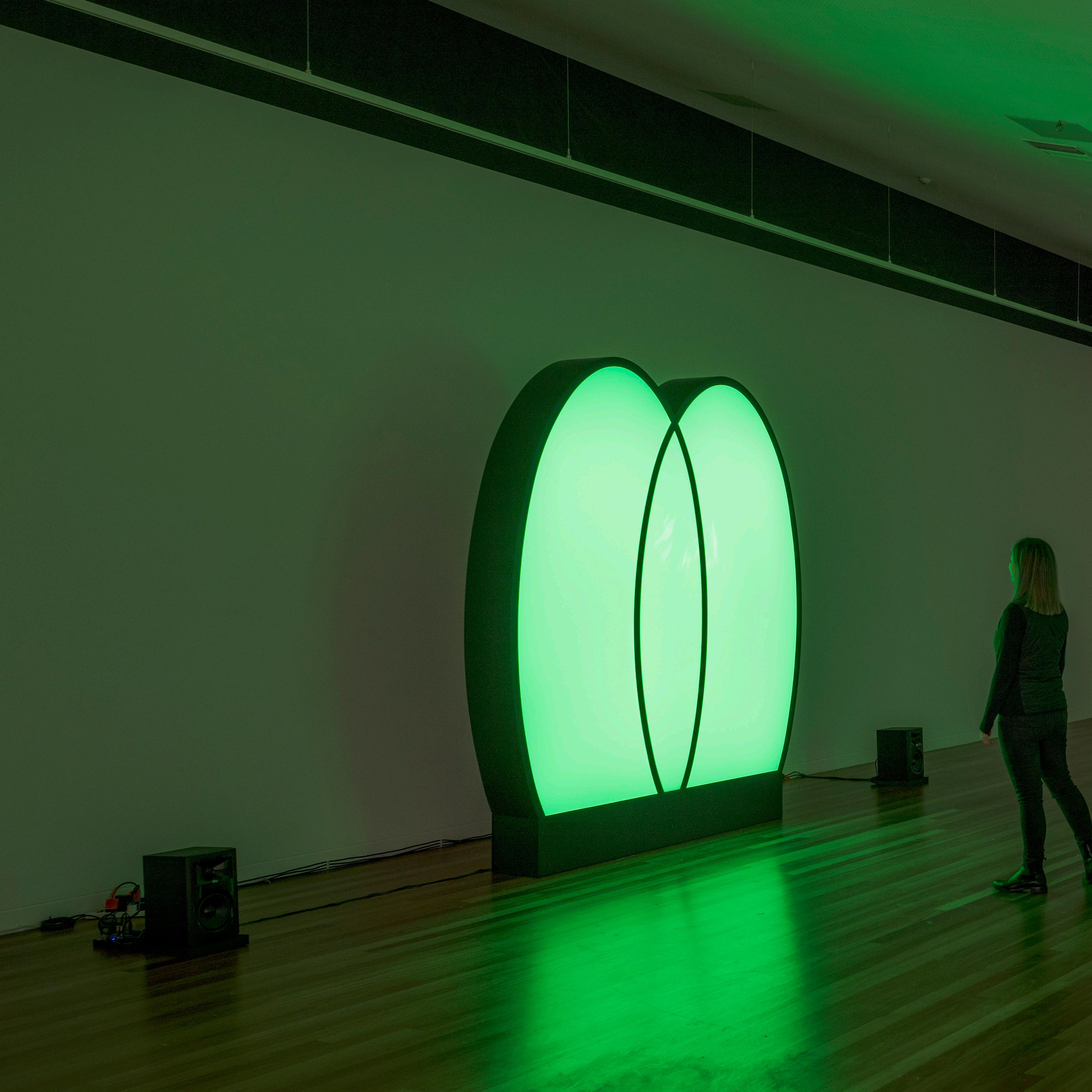 AURORA exhibition installation, Canberra Contemporary Art Space, 2022
Photo by Brenton McGeachie
AURORA exhibition installation, Canberra Contemporary Art Space, 2022
Photo by Brenton McGeachie
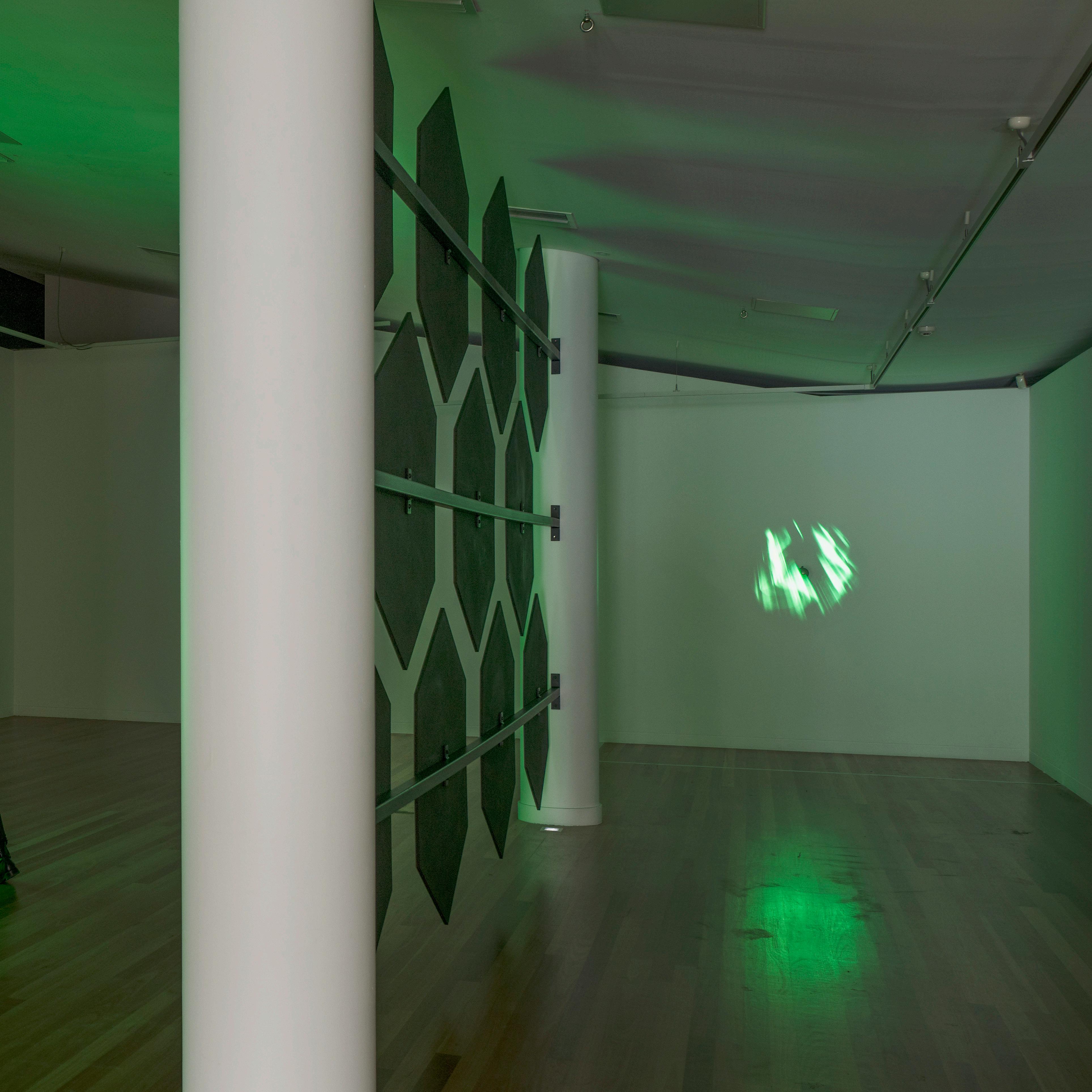
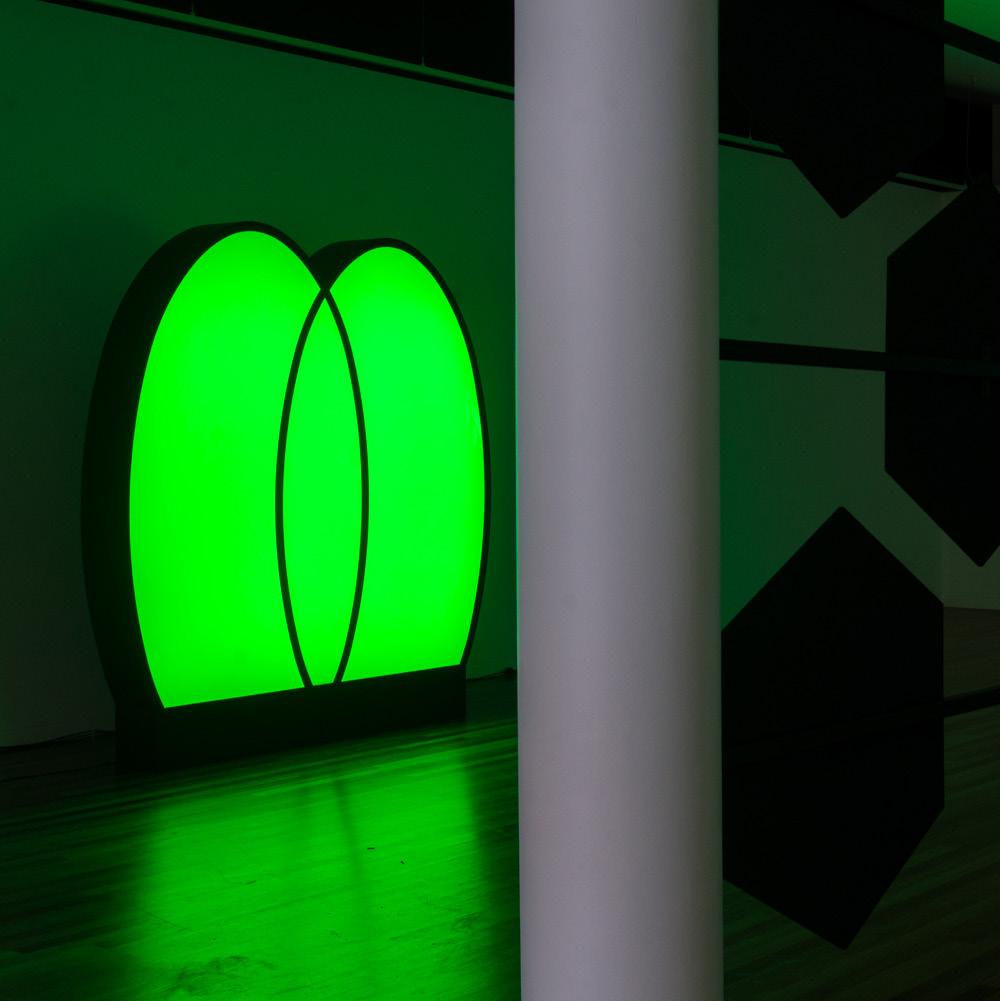
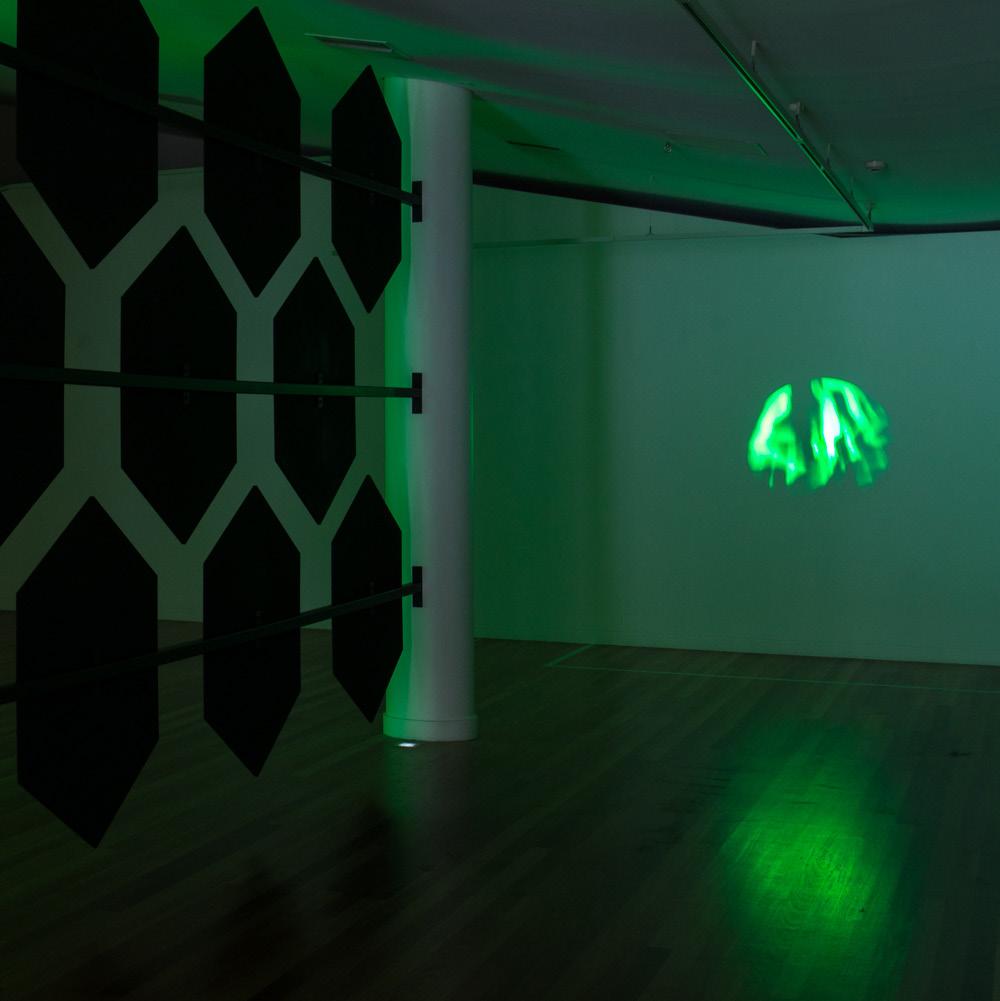 AURORA exhibition installation, Canberra Contemporary Art Space, 2022
Photo by Brenton McGeachie
AURORA exhibition installation, Canberra Contemporary Art Space, 2022
Photo by Brenton McGeachie





 Tyler Jackson
AURORA exhibition installation, Canberra Contemporary Art Space, 2022
Photo by Brenton McGeachie
Tyler Jackson
AURORA exhibition installation, Canberra Contemporary Art Space, 2022
Photo by Brenton McGeachie

 Tyler Jackson
Photo by Brenton McGeachie
Tyler Jackson
Photo by Brenton McGeachie

 AURORA exhibition installation, Canberra Contemporary Art Space, 2022
Photo by Brenton McGeachie
AURORA exhibition installation, Canberra Contemporary Art Space, 2022
Photo by Brenton McGeachie


 AURORA exhibition installation, Canberra Contemporary Art Space, 2022
Photo by Brenton McGeachie
AURORA exhibition installation, Canberra Contemporary Art Space, 2022
Photo by Brenton McGeachie




